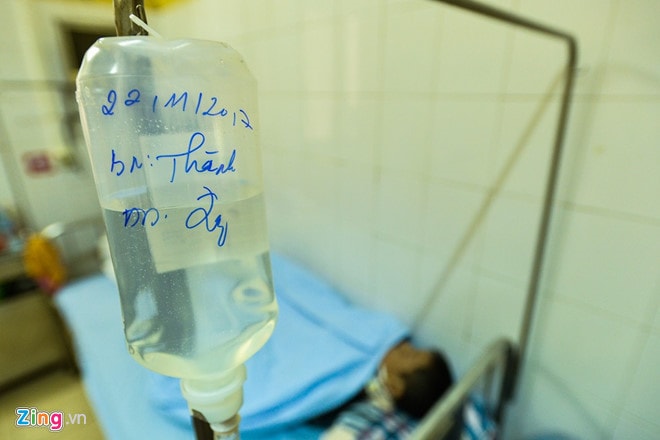Signs of HIV infection
Treatment regimen for HIV-exposed patients lasts one month. Patients are then retested after 3 and 6 months.
Regarding the fact that a series of people in Kim Thuong commune (Tan Son district, Phu Tho province) are suspected of having HIV, Dr. Luong Truong Son, former Deputy Director of the Institute of Malaria - Parasitology - Entomology of Ho Chi Minh City, in charge of Dong Dieu Dermatology Clinic, said that when infected with HIV, the patient will have to go through 3 stages.
The first stage is acute infection, usually 2-6 weeks after exposure or infection. At this time, the patient has a few early symptoms to recognize.
In the second stage, the patient does not show any symptoms. This stage lasts for many years. In the final stage, the patient develops AIDS with a severe immune deficiency, with many opportunistic infections.
In which, the first stage is also called the window. Therefore, the patient can recognize the abnormal condition of the body based on some early signs such as fever, fatigue, body aches, sore throat, headache, nausea, diarrhea... to think about the possibility of HIV exposure.
According to Master, Doctor Hoang Hai Ha - Internal Medicine Department - Hospital 09 (Hanoi), HIV exposure is a term used to refer to contact of mucous membranes or skin of a healthy person with blood, tissue or body fluids of another person leading to the risk of HIV infection.
To know the most accurate result whether a person has HIV or not, immediately after the behavior that has the risk of infection, it is necessary to conduct a test. However, this method requires a long wait for the results.
Therefore, to avoid the possibility of testing positive for the disease, it is best to treat exposure within the first 72 hours immediately after a risky behavior such as being pricked by a needle during a medical procedure, such as an IV or blood test; a wound caused by a scalpel or sharp instrument that causes bleeding; skin damage caused by broken tubes containing blood or body fluids of an infected person; blood or body fluids of an HIV-infected person splashing onto damaged skin areas, mucous membranes (eyes, nose, throat); sexual intercourse with an HIV-infected person, etc.
|
| When there is a risk of HIV exposure, early treatment is needed within the first 72 hours. Photo:Quynh Trang. |
Dr. Hoang Hai Ha added that the HIV exposure treatment regimen lasts one month. The patient is then retested after 3 and 6 months.
Treatment with anti-exposure drugs can be done at home, but it is necessary to monitor closely for problems that occur, and to go to medical facilities immediately if complications occur. The response to the drug as well as complications from the drug depends on how each person reacts to the drug.
The patient may only experience very mild effects such as transient itching, nightmares, but they can also be very severe such as burns and ulcers all over the body, skin burns, fever, scalds, or more severe effects such as respiratory failure, cardiovascular collapse, and bone marrow failure.
These side effects also depend on each type of exposure drug. Currently, there are many types of exposure treatment drugs, but depending on the individual's test results as well as the disease and condition of each person to have the appropriate treatment drug. Each type will have different side effects.
The cost of exposure treatment drugs is still covered by the state. If patients buy them themselves, the price ranges from 1.1 to 1.7 million VND. When engaging in risky behavior, people can go to all provincial or district preventive health centers to receive exposure treatment as soon as possible.


